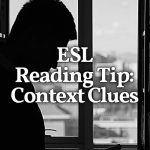
Touchstone English Books
If you’re looking for an ESL textbook for your next class, then Cambridge Touchstone should be at the top of your list. Keep on reading our review of Touchstone English books for all the details you need to know.
Touchstone English Books Review
Touchstone is a 4-skills (reading, writing, listening, speaking) ESL textbook for adults published by Cambridge. There are 4 levels, ranging from 1-4. Touchstone Level 1 is reasonably easy and would generally be suitable for an average freshman English class in Korea.
Touchstone Level 4 is much harder and even third or fourth year English majors in Korea would probably struggle with it. It’s better for Europeans, or other students who have higher levels of English ability than students in Korea. Keep on reading for all the details you need to know about the Cambridge Touchstone English Book Series.
t
The New Touchstone Book: Better than the First Edition
I used the old edition years ago when I was teaching in South Korea and I distinctly remember loathing it. It had all these ridiculous speak like a “native speaker” sections, which I fundamentally disagree with. If you’re a very beginner, it really is not necessary to use gonna and wanna. I don’t even talk like that. And, it also had pages crammed with way too much material. It even overwhelmed me, and I speak English!
Basically, using this book just gave me a very strong, “NO!” feeling and I avoided it whenever possible.
Touchstone Books Second Edition
Anyway, when I moved into the English department at my current university here in Korea, I was given Touchstone to teach from for my conversation classes. I let out a heavy sigh, remembering all my bad memories I’d had from years ago.
But, upon digging into the lesson planning, I changed my mind. Cambridge pulled it together for the second edition and the result is a pretty solid series of 4-skills ESL textbooks. Not the best I’ve ever used, but decent. And I didn’t hate it. They took out most of the stuff I hated from the previous edition, including the speak like a native speaker section, and too much stuff crammed onto one page.
What I Like about the Touchstone ESL Textbook Series:
- The communicative activities in the back of the book are decent/passable. I used many of them, but they certainly could have been more fun. Throw in a board game here and there or something like that.
- The review sections at the end of every three chapters are great.
- I like the listening activities. They’re not all North-Americans, or native English speakers like many of the other ESL textbooks.
- The vocabulary sections are pretty good. There’s usually a lot of old, familiar words with a few new ones mixed in. This is how vocabulary should be learned. A bit of new with a lot of old. It helps students process it far more easily than throwing a huge list of new stuff at them.
- The workbook. I didn’t assign it for homework, but it was a fabulous way to make the midterm and final exams.
- The grammar and vocabulary practice sections are really good, moving from very controlled practice to free practice. They also generally start with pretty easy and progress to a few more difficult ones and are good at hitting the exceptions, if there are any for that specific grammar point.
What I Don’t Like about Touchstone Books:
- The grammar sections are confusing. I often had to take the ideas and make my own sort of chart or something for my students. What they have is just too complicated. For example, teaching all the future tenses together. Why would you just mix in random examples instead of making this rad chart as I did. See Future Tense Chart. Cambridge: you can steal this from me for the next edition if you wish.
- Some topics from the Touchstone Book were pretty weak. I felt like I had to skip at least a few of them in each book because my university students in Korea would have just not been interested.

Touchstone English Book Series Review
The Takeaway on the Touchstone Series
Overall, I’d have to give the Touchstone series a 3/5. I most certainly wouldn’t choose to use it for any of my classes, if I were given the choice. I’d definitely go with 4 Corners, World Link, or even the less than stellar Smart Choice over Touchstone. All those books have solid grammar sections that aren’t confusing and are better at the communicative activities.
If you’re looking for minimal lesson planning, Four Corners in particular is excellent. Basically every single thing in that book is usable. Touchstone is maybe closer to 30 or 40% being usable. For me to really love a textbook, it has to be up into the 70-80% range. 30% is just a whole lot more supplementary materials and lesson plans than I want to do.
What about Touchstone Exams?
If you’re looking for some information about making midterm or final exams for your students based on the Touchstone English book series, then you’ll want to check this article out. It’s filled with all sorts of tips, tricks and advice:
Have your Say about the Touchstone Cambridge ESL Textbook
What do you think about Touchstone English books? Are they a winner or do you have your eye on another option for ESL textbooks for adults? Leave a comment below and let us know what you think. We’d love to hear from you.
Also be sure to give this article a share on Facebook, Pinterest, or Twitter. It’ll help other busy English teachers, like yourself to find this useful resource.




